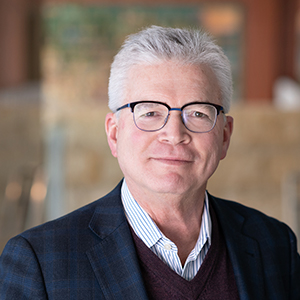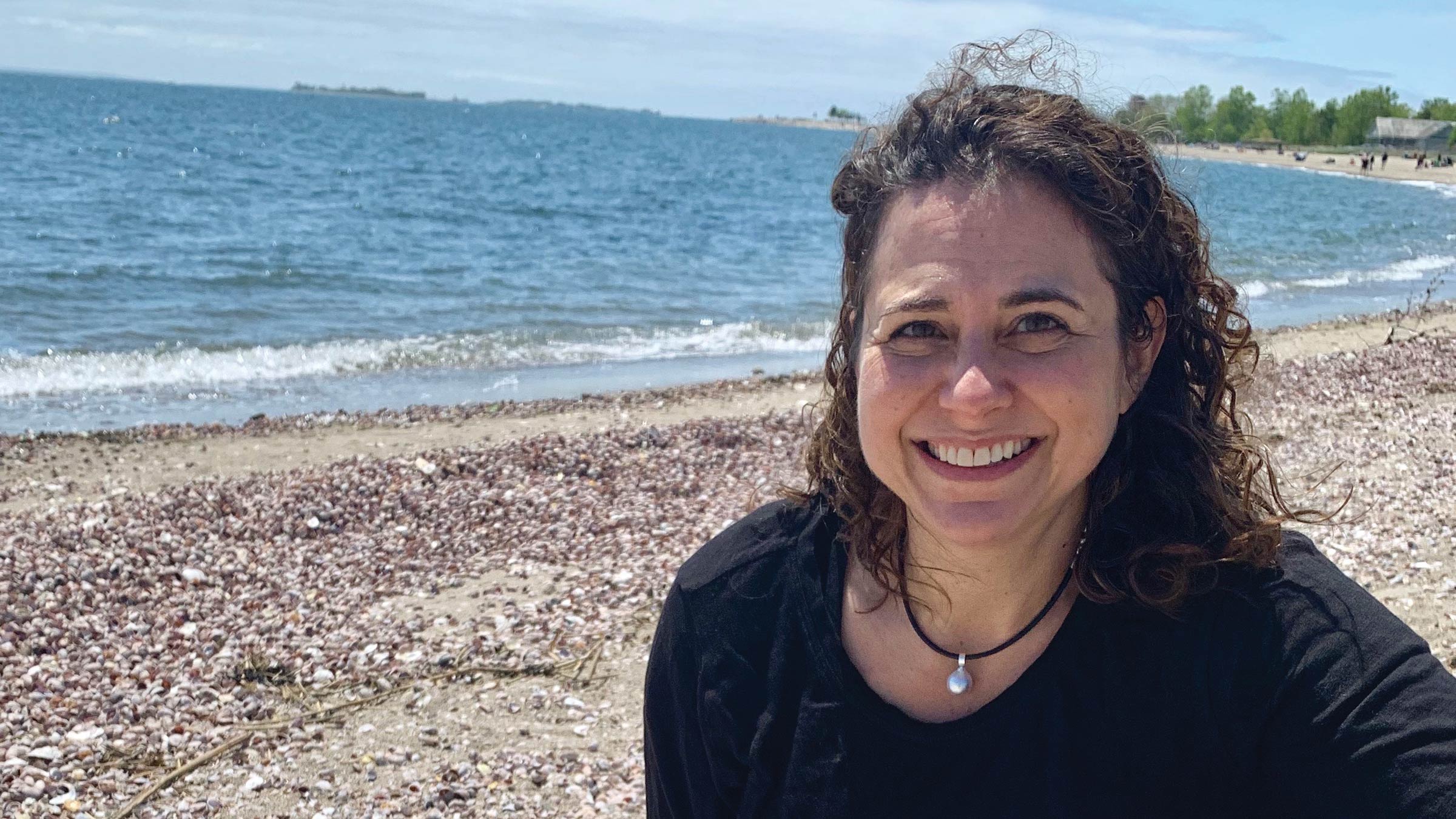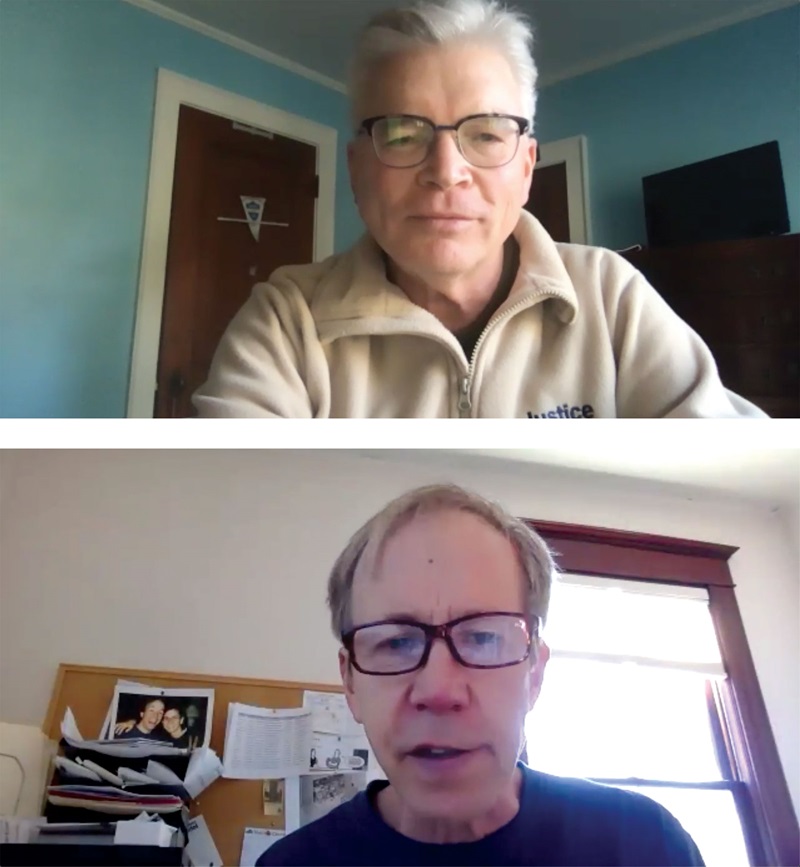
“USUALLY,” ALESSANDRA FOGLI SAID from yet another Zoom screen, “economists look at facts afterward.”
Usually.
COVID-19 changed all that for Fogli, assistant director of inequality research and monetary advisor at the Minneapolis Fed, and for other Institute scholars. The crisis called for immediate response. The economists dived into real-time data, developed new models, offered fast but considered policy recommendations, and forecast short- and long-term trends.
Like many of us, Institute researchers sheltered in place, assisted children with distance learning, tired of home cooking, and worried about their aging parents. Though living in isolation, these scholars helped build a worldwide economic and public health conversation.
Quickly, urgently, they brought the Institute’s mission to life.
FOGLI WAS DOWNRIGHT PRESCIENT. More than a year before the deadly pandemic exploded in early 2020, she wrote a Federal Reserve Bank of Minneapolis staff report titled, “Germs, Social Networks, and Growth.” In it, she and colleague Laura Veldkamp examined how interpersonal connections and social networks spread ideas and technology that help to positively transform economies.
But those same networks and connections, they wrote, also spread disease: “The bottom line is that the way in which networks affect economic growth depends on the disease environment.” (See Research Digest.)
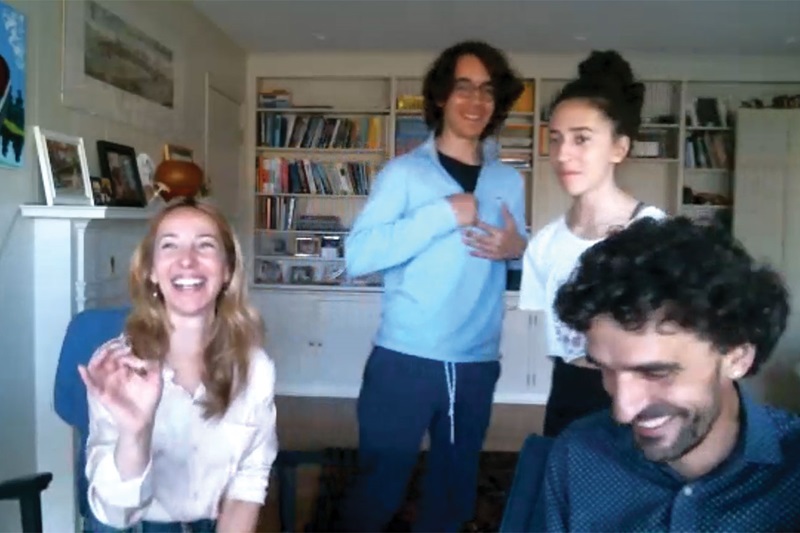
That eerie foresight laid the foundation for Fogli and her husband, fellow Minneapolis Fed economist Fabrizio Perri, to quickly develop an economic model of the social networks that can spread both disease and prosperity. This “ECON-EPI network,” as they call it, analyzes connections between the coronavirus, global networks, and economic shocks. Fogli also helped organize a working group to conduct weekly Zoominars on COVID-19 economics.
More than studying COVID-19’s effects, the couple lived it. “It really hit home for us,” said Perri, from their suburban Minneapolis house.
Their high school freshman, Sofia, saw her gymnastics events canceled. College visits and debate competitions went virtual for Alessandro, their high school junior.
More serious were Fogli’s and Perri’s worries about friends and parents in their native Italy, a global epicenter of the pandemic.
“We were frightened,” said Fogli, whose parents live in Bari, in southeastern Italy.
“We have really close friends who lost their parents,” said Perri, whose 78-year-old mother, Fernanda, a retired emergency room physician, was nearly called back at the height of Italy’s pandemic curve. It didn’t come to that, but for Fogli and Perri, economic research and real life were never so clearly connected.
EVER SINCE WORKING ON HER PH.D. about the Russian banking system in the 1990s, Institute Advisory Board member Lisa Cook, an economist at Michigan State University, has thought about alternative ways for people to exchange money. Back then, Muscovites carried excessive amounts of cash, creating security concerns. Later, conducting research in inflation-burdened Nigeria, Cook witnessed shoppers carrying thousands of naira in bags.
Cook’s solution was for cash to go mobile, carried in smartphones.
The research intensified when she was a member of President Barack Obama’s Council of Economic Advisers. But a decade ago, cybersecurity concerns in government circles weighed heavily, and mobile money in the United States wasn’t practical.
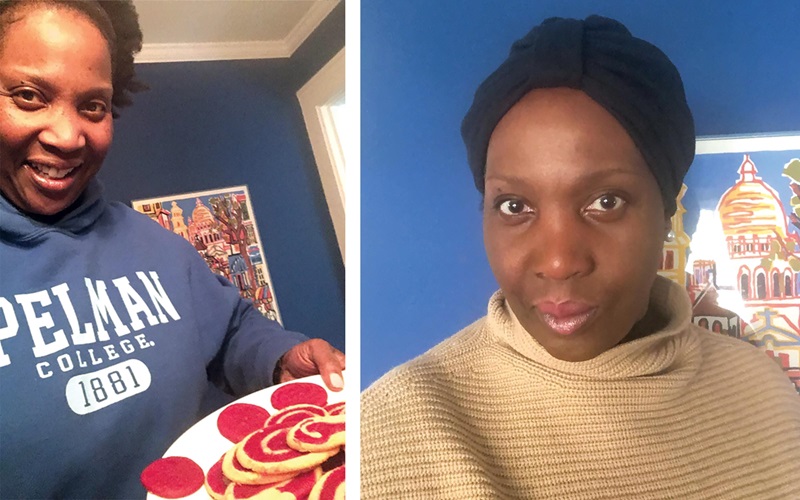
Times change. Apple Pay, Venmo, Zelle, and other mobile payment systems now have worldwide reach, and Cook advocates that they be used to distribute government aid in the wake of COVID-19.
Three days after the Coronavirus Aid, Relief, and Economic Security Act passed, Cook published a three-page article for the Washington Center for Equitable Growth about using mobile devices to deliver urgently needed stimulus aid.
It caught the attention of financial institutions and media. Policymakers asked for details.
Cook writes that 81 percent of Americans have smartphones that can receive and send mobile payments. People of color and those earning less than $30,000 a year rely more on their smartphones than on broadband. The 16 percent of Americans who are underbanked could especially benefit from the speed and flexibility of mobile payments. Plus, in a pandemic, where might people shelter in place? A paper check in the U.S. mail could go to their home in Pittsburgh while they’re with parents in Houston.
“We just don’t have time for checks—that’s what I was thinking when the stimulus package was passed,” she said.
She’s also advising policymakers and employers to be mindful of a traumatized labor force—a force that has gone from historically low unemployment to meteorically high unemployment in the wink of an eye, from fairly safe workplaces to those demanding distance, masks, and barriers.
“I think we’re going to have to have a lot more mental health support,” she said.
Cook was speaking from her home office in Ann Arbor, Mich., a particularly inspiring venue in quarantine. Years ago, pioneering polio virologist Jonas Salk lived in the same house.
“It’s actually comforting to know that somebody worked really hard on this right here, and a solution was found,” she said. “A vaccine was found.”
HEADPHONES ON, BLUE SKIES ABOVE, Misty Heggeness chatted from what looked like an enchanted forest. It was, instead, her faux, virtual Zoom background, replicating her actual rural Maryland surroundings. There, while helping her sixth-grade daughter and fourth-grade son with their at-home schoolwork, the Institute visiting scholar and U.S. Census Bureau economist, produced an Institute policy brief urging government officials to upgrade data collection, storage, and use in a time of crisis.
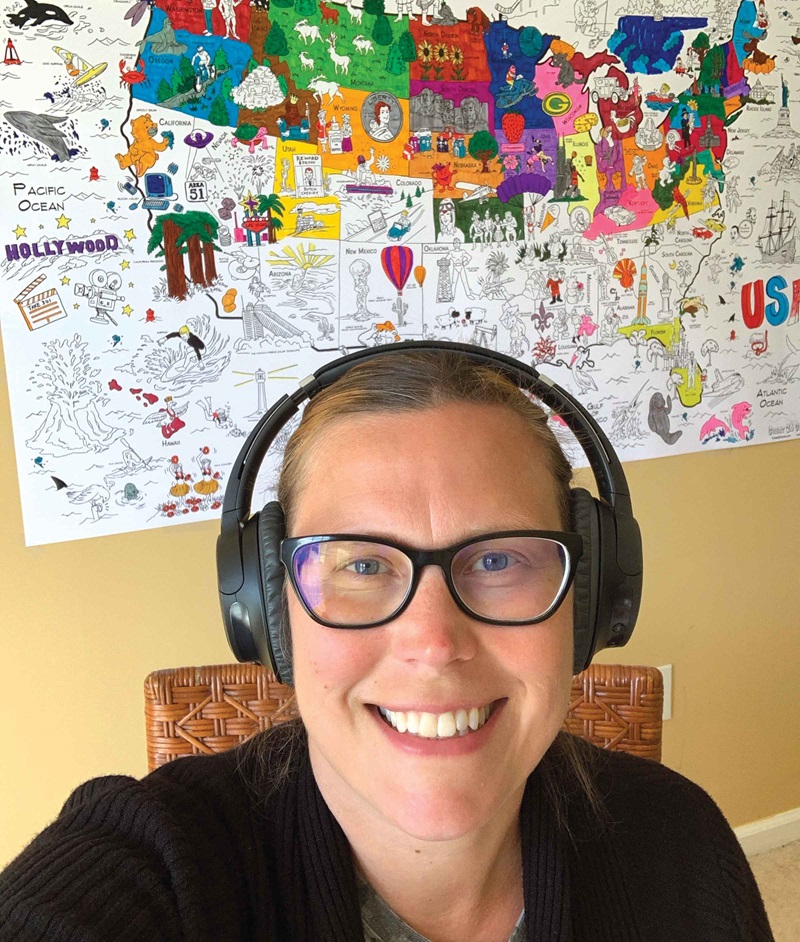
(She also wrote a provocative Institute working paper titled, “Why Is Mommy So Stressed?” that examined the juggling act of working mothers—including herself—during the pandemic. The paper generated widespread media attention, from the Wall Street Journal, Bloomberg, The Hill, and other news outlets.)
Her call to action around data was, fundamentally, for “non-statistical agencies”—such as the National Institutes of Health or the Department of Health and Human Services, which simply gather data—to work more closely with “statistical agencies”—such as the Bureau of Labor Statistics and her own Census Bureau, which are expert in producing useful official statistics.
Heggeness recognizes the mistrust that exists when some agencies are asked to give data to another, particularly public health data. But she believes that individual privacy isn’t at risk and that the reward can inform the public and policy.
“We’re interested in aggregate trends; we believe in the law of large numbers,” Heggeness said of economists. “We’re not interested in identifying a certain Sally Jones. For us, that could easily be just Person Number Five in our data set. Sometimes, I feel when we have these privacy discussions, we researchers do ourselves a disservice by not being vocal enough.”
History shows that desperate times fuel statistical innovation. It wasn’t until the Great Depression, with policymakers wondering exactly how extensive unemployment was, that Census scientists began conducting a household survey to learn the depths of the Depression’s impact on workers. For the first time, Census statisticians experimented with sampling that produced accurate estimates. It laid the groundwork for the long-standing Current Population Survey and some instant surveys the Census Bureau launched earlier this year as COVID-19 pummeled the U.S. economy.
Heggeness hopes that history of innovation will repeat itself in these desperate times.
INSTITUTE SENIOR SCHOLAR Aaron Sojourner knew unemployment figures were going to be bad, just not how bad. So, like most of us in search of answers, he Googled it.
His was no simple search, but a scientific approach that helped him and Yale colleague Paul Goldsmith-Pinkham create a model to accurately predict what the nation’s unemployment rate would be on March 21. That’s when COVID- 19’s initial impact generated what was, at that point, the nation’s largest one-week share of unemployment insurance (UI) filings in history.
Analyzing UI claims was nothing new for Sojourner, a University of Minnesota labor economist. As the pandemic took its early toll, he believed that determining the severity of unemployment could assist policymakers in developing an assistance package for workers.
First, he pieced together official data and news reports from 35 states and the District of Columbia, which accounted for 77.5 percent of the nation’s unemployment claims. But what about claims in the other 15 states? That’s where Google came in.
Using Google Trends, Sojourner and Goldsmith-Pinkham looked at how many people in all states used the search term “file for unemployment.” That filtered out people seeking just news and information. Sojourner discovered that search spikes for UI filings were similar across states. Knowing that, he extrapolated from the 35 states plus D.C. to forecast the total increase for all 50 states.
He had some competition in that effort.
Investment bank UBS predicted an increase of 860,000 unemployment claims, Goldman Sachs said 2.25 million new claims, and Bank of America forecast 3 million. In a blog item for the Economic Policy Institute, Sojourner and Goldsmith-Pinkham projected 3.394 million.

“We were going out on a limb,” Sojourner said, with such a high estimate.
Actually, they weren’t. When Department of Labor figures were released, the official number was 3.283 million. Pretty close.
Throughout all this, Sojourner was working in his southwest Minneapolis home with his public school teacher wife and two teenaged daughters doing their distance instructing and learning. His mother was in a nearby nursing home, where several residents had died from COVID-19. He had a lot on his mind.
His scholarship, though, was easy for non-economists to understand and available daily to his more than 9,000 Twitter followers.
“A big part of my job is to help the public understand what’s happening in the economy, help them understand what evidence is pointing to and what policy options we have,” Sojourner said. “I am interested in being in a dialogue with not just the academic economics community—which is important, of course—but also with the public.”
INSTITUTE SENIOR SCHOLAR Sophie Osotimehin felt anxious. She had nowhere to go during Montreal’s strict stay-at-home orders. From long distance, she warily monitored the health of relatives in France and Nigeria. She wondered what, if anything, she could add to the proliferating COVID-19 scholarship that might make a difference.
In late March, a colleague from the French Council of Economic Analysis called, knowing Osotimehin had done research on linkages between different economic sectors. It got her thinking about the differences between “essential” and “non-essential” workers in their exposure to health and economic risks.
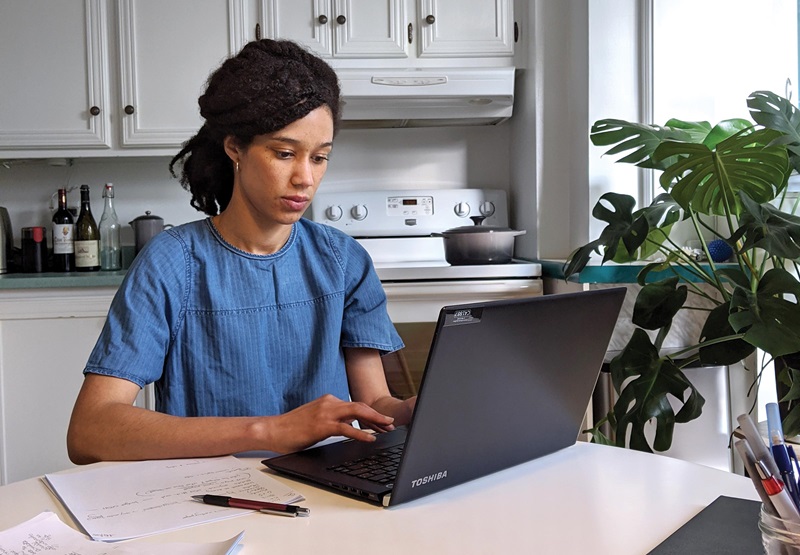
While many scholars were looking at the decline in the “upstream” supply of products because of shutdowns, Osotimehin decided to also examine the demand side, or the “downstream” impacts—if retail stores are shut down, for instance, how will that affect clothing manufacturers and cloth suppliers. She and her co-author, Latchezar Popov, modeled the health risk associated with maintaining essential goods and services during lockdowns and the economic risk associated with the shutdown of stores, restaurants, and retail establishments.
What they found was a remarkable cascading effect of health and economic risk that accounted for as much as 25 percent of total worker exposure to both. The high level of such connected risks surprised her, but also made her wonder how policymakers might intervene in the future when similar public health and economic crises spread across the economy.
What also surprised her was how quickly she could produce such a well-developed working paper—five weeks, rather than years that others have taken. “Shortest project I have ever done,” she said.
Still, she wondered if too many economists have jumped on an academic bandwagon and, perhaps, over-analyzed COVID-19’s effects. The pandemic cannot, should not, be economists’ sole focus in the months ahead, she said.
After all, she said, “all other social and economic issues have not disappeared. We don’t know what the next shock or crisis will be.”
BUT WE DO KNOW THIS. The community that the Opportunity & Inclusive Growth Institute has become will clearly have a role to play in the future.
“The Institute has the right approach,” said Alessandra Fogli, “because, at times like these, we’re thinking about interdisciplinary work and synergies. When you specialize too much on one thing, you’re vulnerable. But if you’re working with people from different areas and with different expertise and backgrounds, you’re better positioned to deal with something new.”

